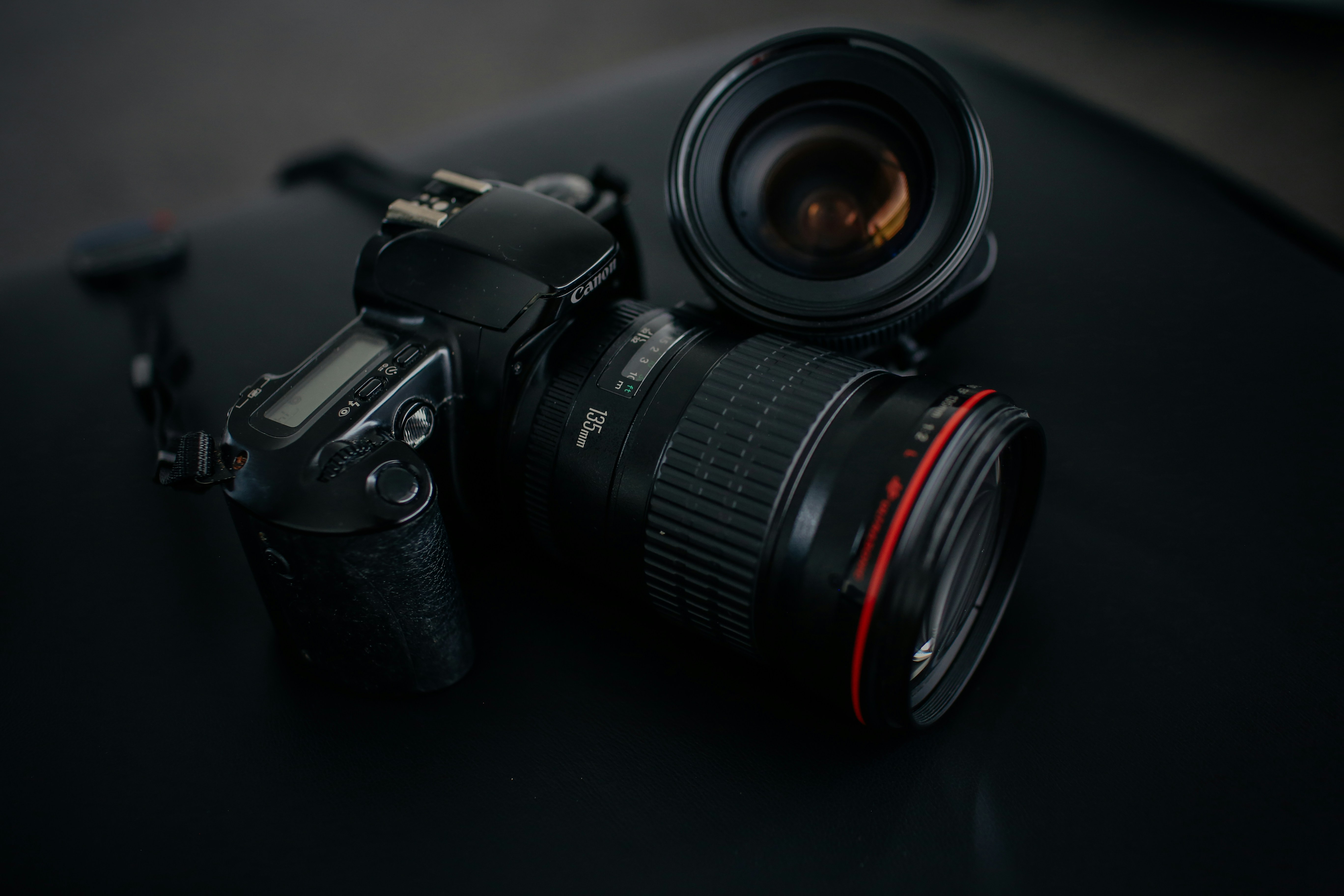Composition Techniques in Photography is not just about capturing a moment; it’s about creating a visual story that captivates the viewer and evokes emotions. Whether you’re documenting a significant event or simply capturing everyday beauty, the way you compose your photos can make all the difference. Composition is the arrangement of elements within your frame, and mastering this art can turn a good photo into a truly stunning one. Here, we will explore seven essential techniques that will help you create visually stunning photos.

Photo by William Thomas on Unsplash
1. Rule of Thirds in photography
The rule of thirds is one of the most fundamental principles in photography, and for good reason. It’s a simple yet powerful technique that can dramatically improve your compositions. To apply the rule of thirds, imagine dividing your frame into nine equal parts by overlaying two equally spaced horizontal lines and two equally spaced vertical lines. This grid creates four intersection points and nine distinct sections.
Composition Techniques
The idea is to place the key elements of your scene along these lines or at their intersections. Doing so creates a sense of balance and harmony, making your photo more engaging. The rule of thirds works because it aligns with the natural way our eyes scan an image. Instead of being centered and static, the subject is positioned off-center, leading the viewer’s eye through the composition and creating a more dynamic and interesting photo.
For instance, in landscape photography, placing the horizon along the top or bottom third of the frame, rather than directly in the middle, can add depth and interest. A horizon positioned on the top third gives more emphasis to the foreground, perhaps showcasing a beautiful meadow or an interesting rock formation. Conversely, placing the horizon on the bottom third highlights the sky, perfect for capturing dramatic clouds or a vibrant sunset.
Composition Techniques
2. Leading Lines in Photos
Leading lines are powerful tools for guiding the viewer’s eye through a photo, creating a natural path that draws attention to specific elements within the frame. These lines can be straight, curved, or even implied, and they play a crucial role in establishing the composition and visual flow of an image. Roads, rivers, fences, and architectural lines are some of the most common examples of leading lines that photographers use to enhance their shots.
When you incorporate leading lines into your composition, you can direct the viewer’s gaze toward the main subject, making it stand out more prominently. This technique not only emphasizes the focal point but also adds a sense of depth and movement to the image. For example, a photo of a winding road that leads the eye towards a distant mountain creates a sense of journey and adventure, inviting the viewer to explore the scene.
Leading lines can also help create a three-dimensional effect, especially in landscapes and architectural photography. By positioning these lines strategically, you can make a flat image appear more dynamic and layered. In an urban setting, the lines of a building, the curve of a bridge, or the pattern of a street can all serve as leading lines that enhance the overall composition. It’s important to pay attention to where the lines lead and how they interact with other elements in the frame. The lines should guide the viewer naturally and seamlessly, without causing distraction or confusion. Experimenting with different perspectives and angles can help you find the most effective use of leading lines in your photos.
Composition Techniques

Image by Mohamed Nuzrath from Pixabay
3. Photography Framing Techniques
Framing is a powerful compositional technique that uses elements within the scene to create a “frame” around your subject. This approach draws the viewer’s attention directly to the main subject and adds depth to your images. Natural frames like trees, branches, and foliage can create a picturesque border, adding an organic feel to your composition. For instance, shooting through a canopy of leaves to capture a person in a clearing can result in a beautifully framed portrait.
Composition Techniques
Architectural elements such as windows, doorways, and arches also make excellent frames, adding structure and symmetry. Photographing someone through an ornate doorway, for example, emphasizes their presence and adds a sense of grandeur. Urban environments offer numerous opportunities for creative framing, with angles and perspectives that highlight the subject effectively.
Framing can also be implied, using shadows, light patterns, or color contrasts to create a visual boundary. This subtle approach directs attention to the subject without being overt, adding sophistication to your composition.
Creating a sense of depth in a photo can significantly enhance its engagement and visual appeal. By incorporating elements in the foreground, middle ground, and background, you can achieve a layered effect that adds dimension and complexity to your images.
Foreground elements are closest to the camera and can serve as an introduction to the scene. They guide the viewer’s eye into the photo. These elements might include flowers, rocks, or any object that adds context and interest. Middle ground elements are the main subjects of your composition and typically sit at the heart of the image, providing the focal point around which the rest of the scene is built. Background elements, found in the distance, help to set the scene and provide context, giving viewers a sense of the environment.
Using depth and layers effectively involves careful positioning and consideration of each element’s role within the composition. The interplay between these layers can create a sense of scale and perspective, making the photo more immersive. Experimenting with different apertures can also help control the depth of field, allowing you to blur certain layers while keeping others in sharp focus.
Composition Techniques
Composition Techniques
4. Perspective and Angles in Photography
Changing your perspective and experimenting with different angles can transform an ordinary scene into something extraordinary. By varying your shooting position, you can provide fresh and unique viewpoints that add interest and creativity to your photos.
Shooting from high above, for example, can offer a bird’s-eye view that highlights patterns and structures not visible from eye level. This perspective is excellent for landscape photography, cityscapes, and large events, where capturing the expanse and arrangement of elements can create a dramatic effect.
Conversely, shooting from ground level can make subjects appear larger and more imposing, giving a sense of grandeur and dominance. This technique works well for portraits, architectural shots, and nature photography, where the low angle can emphasize the height and scale of your subject.
Experimenting with unusual angles, such as tilting your camera or shooting from an extreme side angle, can introduce a dynamic and playful element to your composition. These unconventional perspectives can reveal details and shapes that are otherwise overlooked, turning a mundane scene into a visually intriguing image. In addition to high and low angles, consider moving around your subject to find the most compelling viewpoint. Sometimes, the most captivating shots come from stepping to the side, crouching, or even climbing to gain a different vantage point.

Photo by Yiran Ding on Unsplash
5. Color and Contrast in Photography
Colors play a crucial role in photography, influencing the mood, composition, and visual impact of a photo. Understanding color theory and using contrasting colors can significantly enhance your compositions and make your subjects stand out.
Complementary colors, such as blue and orange, are opposite each other on the color wheel and create a dynamic contrast that draws attention. For example, photographing a sunset with the warm orange hues contrasting against the cool blue sky can create a striking and vibrant image. Similarly, a portrait of someone wearing a blue outfit against an orange background can create a visually appealing color harmony.
Understanding color temperature, which refers to the warmth or coolness of colors, is also important. Warm colors like reds, oranges, and yellows evoke emotions such as warmth, energy, and passion, while cool colors like blues and greens convey calmness, serenity, and introspection. When composing your shot, consider how colors interact with each other and with your subject. Pay attention to the overall color palette of your scene and how different colors can enhance or detract from the mood you want to convey. Sometimes, simplifying your color palette by focusing on a few dominant colors can create a more cohesive and impactful composition.
Composition Techniques
6. Patterns and Textures in Photography
Patterns and textures are elements that can add depth, rhythm, and tactile quality to your photos, making them more visually interesting and engaging.
Patterns in photography refer to repetitive elements within the frame, such as lines, shapes, or colors, that create a sense of rhythm and order. Capturing patterns can add a dynamic and harmonious feel to your composition. For example, photographing a row of identical chairs or a series of windows on a building can create a pleasing visual repetition that draws the viewer’s eye through the image.
Textures, on the other hand, refer to the surface quality of objects in your photo. Textures add a tactile dimension that can evoke a sense of touch and realism. Whether it’s the rough texture of a tree bark, the smooth surface of a glass window, or the softness of fabric, textures can add depth and character to your subject. They create visual interest and can convey the physicality of the objects depicted.
Combining patterns and textures in your compositions can create powerful visual contrasts and harmonies. For example, photographing a textured wall with intricate patterns of light and shadow can create a captivating image that stimulates both the visual and tactile senses.
Composition Techniques
Composition Techniques

Photo by Erik Mclean on Unsplash
7. Depth and Layers in Photography
Creating a sense of depth in a photo can significantly enhance its engagement and visual appeal. By incorporating elements in the foreground, middle ground, and background, you can achieve a layered effect that adds dimension and complexity to your images.
Foreground elements are closest to the camera and can serve as an introduction to the scene. They guide the viewer’s eye into the photo. These elements might include flowers, rocks, or any object that adds context and interest. Middle ground elements are the main subjects of your composition and typically sit at the heart of the image, providing the focal point around which the rest of the scene is built. Background elements, found in the distance, help to set the scene and provide context, giving viewers a sense of the environment.
Using depth and layers effectively involves careful positioning and consideration of each element’s role within the composition. The interplay between these layers can create a sense of scale and perspective, making the photo more immersive. Experimenting with different apertures can also help control the depth of field, allowing you to blur certain layers while keeping others in sharp focus.
Composition Techniques
Composition Techniques
conclusion
In conclusion, the art of composition is about creative exploration and experimentation. It’s about seeing the world through a unique lens and capturing moments that resonate with viewers. So, embrace these techniques, practice them, and let them guide you in creating photographs that not only capture moments but also tell compelling stories.
Composition Techniques













